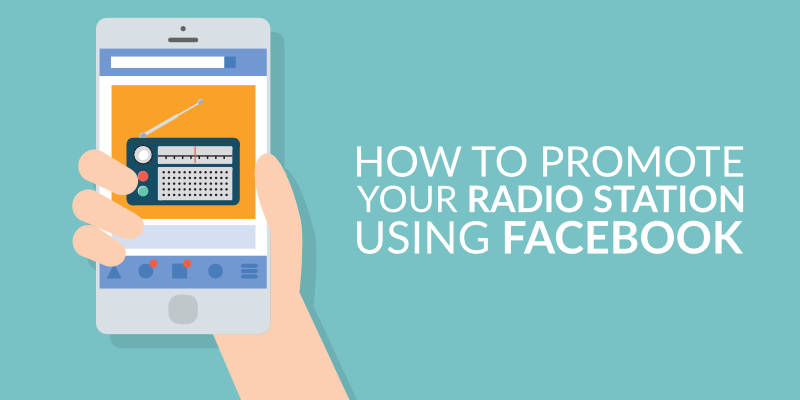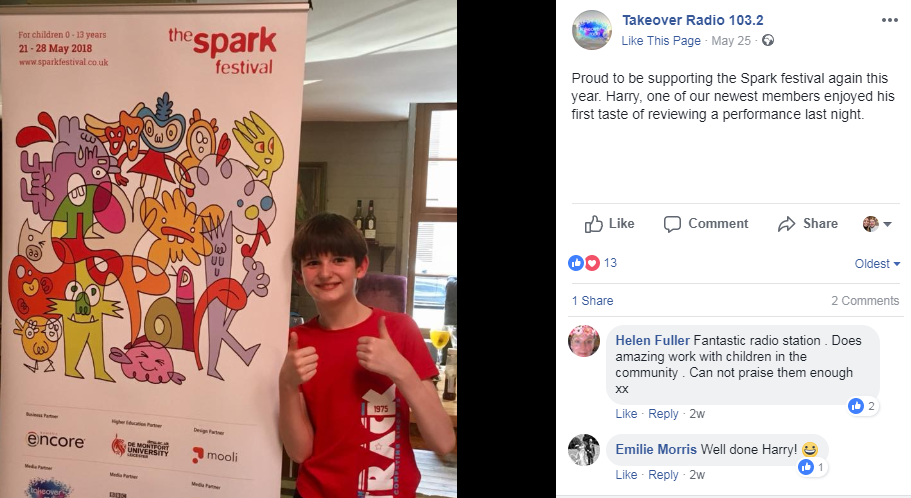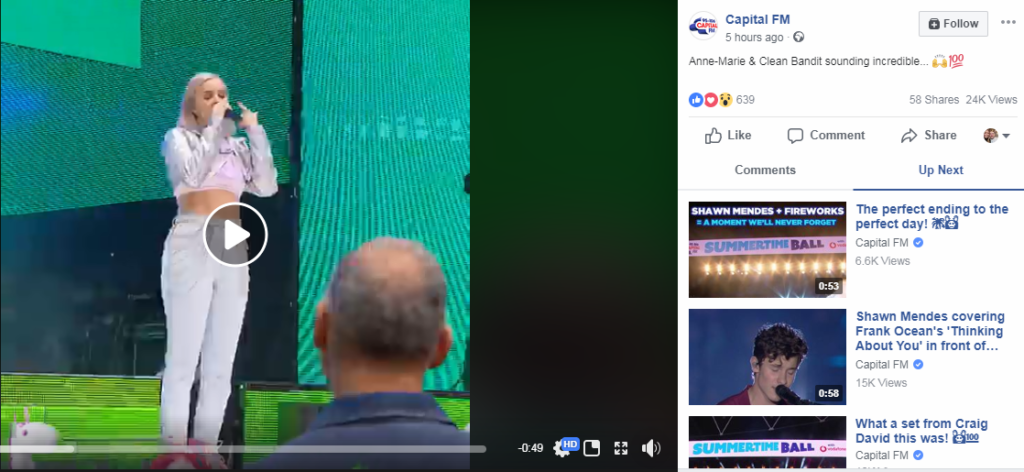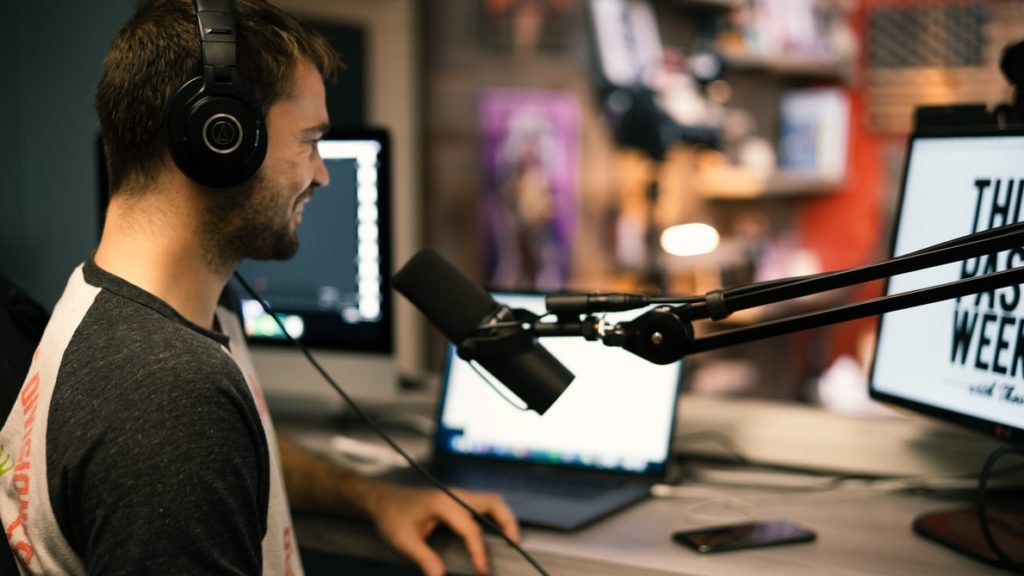
Facebook used to be the go-to social platform for businesses of all shapes and sizes to promote what they do and engage with fans. However, since Facebook’s CEO Mark Zuckerberg announced changes to the platform’s algorithm which now prioritises content from friends over businesses, it has become a lot harder.
That’s not to say that your radio station can’t still take advantage of the power of Facebook, using it to benefit you and your audience. We’ve outlined a few quick-fire ways you can promote your radio station below, before also exploring Facebook Live, which has the potential to be an exciting addition to your digital strategy.

Image: Austin Distel/Unsplash
Facebook and your radio station
Facebook has more than 2.7 billion active monthly users. This makes the platform a great way to reach your listeners and promote shows, events, news or giveaways.
Due to the huge amount of content published on Facebook every day, you need to make sure everything that comes from your page is relevant and of the highest quality in order to catch the eye.
The following tips will give you an idea of how to use your Facebook page to promote your radio station.

Image: Solen Feyissa/Unsplash
Tip One: Optimise your Facebook page
To take full advantage of the power of Facebook, you must first ensure that you create a business profile and keep it up to date.
Your Facebook profile is your radio station’s first impression for social media users. This is why it’s important to make sure your Facebook radio page is easy to find and contains all the relevant information your listeners need.
Free broadcast and internet radio platform Audacy has a well-optimised Facebook page and contains all the information a business page needs. It includes:
- An engaging description
- Additional contact information such as the link to Audacy’s website
- The studio’s address
- Links to Audacy’s Instagram and Twitter pages
- Information about upcoming events

The more information you have on your Facebook page, the higher the chance your page will be the first result in the search rankings. This will make it easier for potential listeners to find out more about your station.
Tip Two: Don’t be over-promotional
If you constantly publish promotional material, selling your radio station post after post, there is an increased likelihood that this will be seen as spam by the new Facebook algorithm. As a result, these posts won’t be pushed out as frequently or as far to your fan’s feeds, so fewer people will see what you publish.
To help personalise and improve content, follow this general rule of thumb:
Stick to an 80-20 rule, where 80% of your posts are socially focused, sharing memes, videos and other content and 20% of your posts are promoting your radio station, tends to work well and will see you reach the largest percentage of fans possible.

Tip Three: Engaging posts show more frequently in news feeds
Your aim is to get the largest number of engagements and reactions on your posts as possible, as these show up more frequently in your fan’s newsfeeds.
Your most recent posts with the highest number of likes, comments and shares will increase its potential reach, so be sure to ask your followers questions that require them to leave a comment, and also ask them to share things for good measure too!
Here are a few ideas you can use to generate more engagement on your Facebook page:
- Promote upcoming events, even if they are held virtually
- Repost listener-generated content
- Share videos and stories taken from inside the studio
- Reply to comments from listeners
- Introduce presenters and guests who feature on the show by creating posts or short videos
- Create posts to target businesses that could use your radio station to advertise their services
Remember, you can also boost your posts by adding hashtags or tagging presenters or guests to reach more listeners.

Image: Soundtrap/Unsplash
Tip Four: Consider using Facebook ads
If you want to guarantee your content is seen by a large number of people who have interests and likes that you specify (and who live in your target area) you can reach this audience by paying Facebook to promote your content to them.
Therefore, if you have a budget available and have something interesting to say that is worth promoting (for instance, an exclusive behind the scenes interview or a great competition) why not give paid advertising a go?
What’s great about this is that you can also start targeting your competitors’ listeners, ensuring your content gets pushed out to them without them even knowing.
Make sure that you continually monitor the effectiveness of each ad. Not only will this help personalise and improve ad content, but it also allows you to fine-tune your ads if a strategy is not working.

Image: Fernando Lavin/Unsplash
Tip Five: Use Facebook Live for your radio station
Facebook Live enables you to broadcast live videos to your followers at the click of a button which allows you to create engagement with your listeners.
What was once only available through the ears of your listeners can now be seen too; taking your radio station and the shows on it to the next level. This also gives your listeners a ‘behind-the-scenes’ look at your radio station.
There are a few things for you to bear in mind when it comes to Facebook Live for your radio station:
Make sure your Facebook Live has a purpose
There’s very little point in broadcasting live just for the sake of it; what with the fast-paced lives we all lead, if your event isn’t very interesting you’ll soon have people turning off. However, there are some great features that will be sure to pull in your audience to your live show on Facebook, including:
-
- Interviews with big stars
- Exclusive acoustic performances from singers and bands
- Outside broadcasts backstage at festivals and events
- Comical stunts
- Charitable appeals and events

Promote the broadcast in advance
In order for people to know and look forward to your live broadcast, you need to let them know about it in advance.
Use the platform of your radio station to plug any Facebook Live events to your audience, whilst also utilising all the other social media channels you use, emails to those on your subscriber list and even adverts on your station too.
A simple shout-out from the presenters on your radio shows, for instance, stating that they will be broadcasting live from the backstage area of a local festival, interviewing all the stars as they come off stage and to follow your Facebook page to watch this exclusive content, is likely to see your follower count rise.

Image: Alexey Ruban/Unsplash
Understanding the difference between live and archived videos
When creating a video on Facebook Live, you will be producing something that can be seen live and archived for after the event.
With your live video, you’ll obviously want to make it longer, so you give time for viewers to tune in and also for you to encourage interaction with those who are watching it. If you are interviewing a star name, you could ask those watching to send in their questions live that can be asked on the spot.
Once the Facebook Live broadcast ends, the great thing is that it will be archived so more people can view it after the event. If it has created a bit of a buzz when the video was live, there’s a good chance that more people will come and view it afterwards, so edit to ask those late comers for their comments and thoughts on the video. You can even embed the video on your radio station’s website and promote it through your other social media accounts too.
Don’t forget that Facebook Live is an experience you can review, which is why it’s important that you indicate whether it had the engagement you hoped for and what you can do next time to reach an even wider audience.
Experiment with your Facebook page and how you use it for your radio station, as testing different types of content, the times you publish and the subject of your Facebook Live videos will help you develop your strategy and ensure long term success.
Wrapping Up
Facebook is a powerful marketing tool that any radio station can use to advertise their business and connect with their listeners.
To do this effectively, you need to make sure your Facebook page is up to date and that you include relevant information so your page ranks highly in search results.
Another worthwhile marketing tool, and a way to improve content and services, is to create an app so that your listeners can connect to your radio station from their mobile devices.
At AppInstitute, we make it easy for radio stations to create their own apps, change controls at any time and link their social media profiles to the software.
To create an app for your business in four simple steps, click here to find out more.

Image: Drastic Graphics/Unsplash

One thought on “How to Promote Your Radio Station Using Facebook”